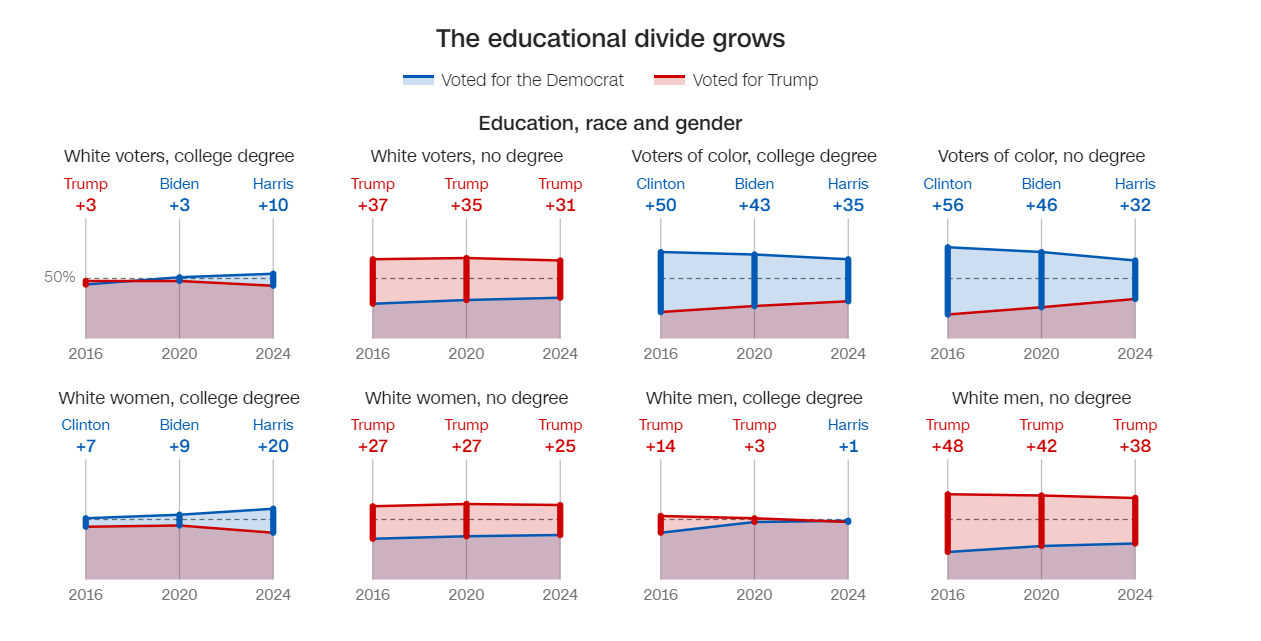For City Journal, I survey last night’s election results. There’s a case to be made that 2024 (even more than 2016) could be a major “realignment” election.
Tuesday night signaled a realignment in American politics, as Donald Trump rode his “Grand New Bargain” coalition into the White House. Trump recast Republicans as the party of the safety net, strong borders, technological innovation, and the ordinary person against cultural elites. In one of the greatest feats of political judo in American history, Trump leveraged the ferocity of his opponents against them. A series of unprecedented prosecutions in 2023 helped transform the former president into a symbol of embattled Americans and national alienation, and the excesses of the Biden years (especially on immigration) helped greenlight Trump II.
Trump’s victory in 2016 was an inside-straight shocker, but the once-and-future president comprehensively defeated Kamala Harris on Tuesday….
Many signs point to this new Republican coalition as being more ethnically diverse and more blue-collar. While Harris did improve on Biden’s margins in a few areas (such as in the Atlanta suburbs), Trump consistently bettered his past performance in rural and exurban counties. Perhaps even more strikingly, he ate into Democratic margins on their home turf. While votes in the New York area are still coming in, Trump seems to have significantly improved on his 2020 performance in much of New York City’s five boroughs. Bordering Mexico, Starr County in Texas had backed Democratic presidential candidates for over a century, but Trump won it by 16 points. Elsewhere in the Lone Star state, Trump picked up supporters in the Dallas and Austin suburbs.
You can read the whole thing here.
There’s obviously much more to be said, but for now I’ll leave you with this image from CNN, which shows the changing shape of the electorate.



